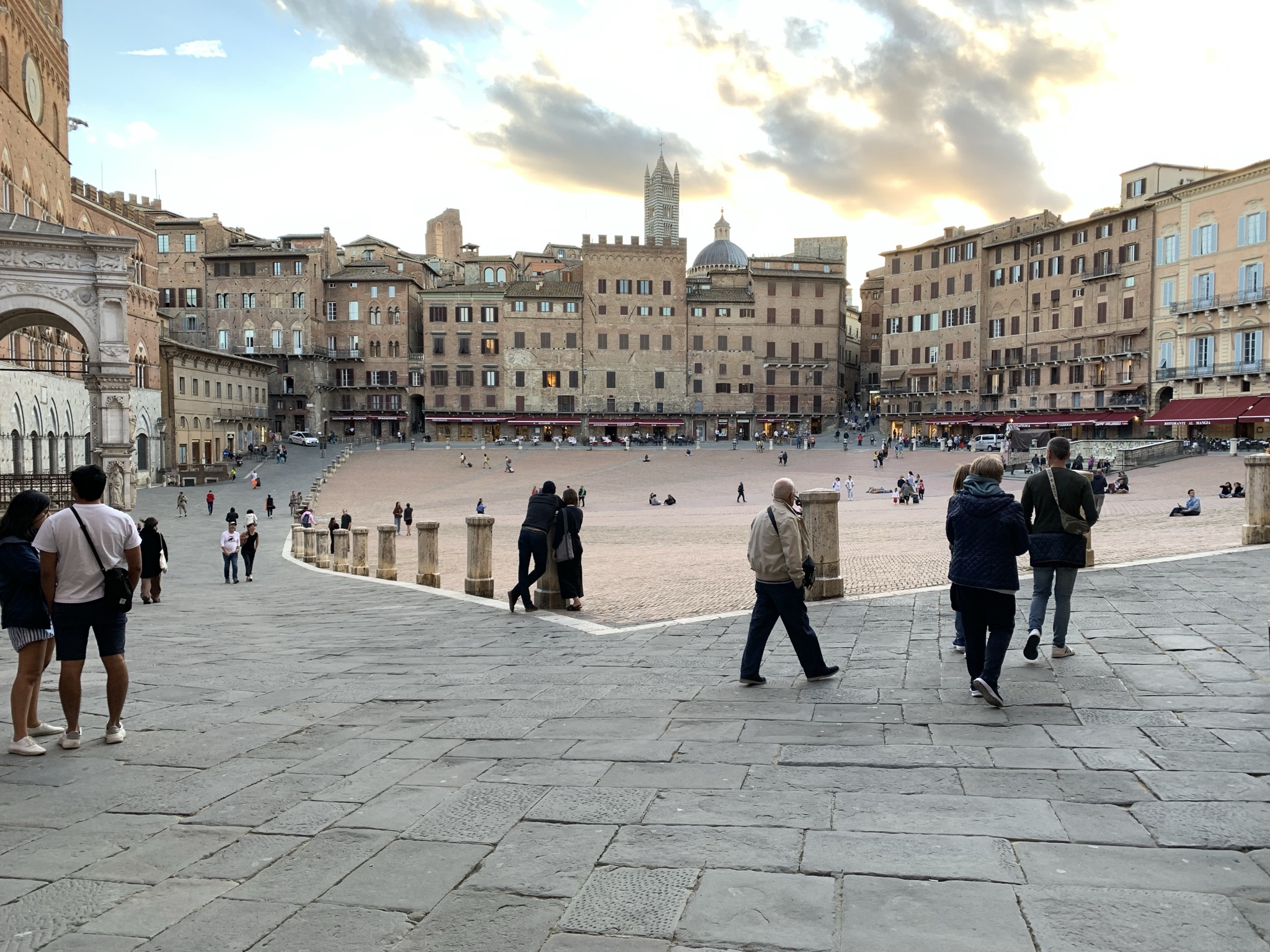
Steeplechase Racing - and a win for Ima Wonder
- July 01, 2024

SIENA – Home of the Palio Horserace
By Sally Blyth
(This article appeared in the Spring 2022 Owners Bulletin).
I was recently in Tuscany and spent a day in the magnificent medieval city of Siena. Once a major banking city it showcases the architecture and ambience that bring dreams of Italy to life.
Famous for the hectic Palio horserace, the Piazza del Campo has an impressive tower and a life of its own. Seeing the attractive Duomo (cathedral) with the sun glinting on its façade is magical and the general hustle and bustle of the place provides great dining and people-watching opportunities.
The Palio is Siena’s most important event and takes place on 2nd July and 16th August every year. Quite how they get around that sharp and dastardly corner of the square defies belief.
Ten of the 17 “Contrade” (areas of Siena) participate in the race – seven by right and three drawn by ballot. Each Contrada has its own emblem and colours and the streets of the city are awash with flags in all shades of the rainbow. It’s a showy nod to the fierce loyalty that locals have for the area in which they were born and continue to support throughout their lives. There is Palio passion on display everywhere you look, even when it’s not Palio time.
Records show that horse racing in Siena dates back to the 6th Century, giving the Palio event a long and strong history. Rules have evolved, along with traditions and customs, and today it is a spectacle like no other.
As the race date approaches, the Piazza del Campo is prepared for the event, ready for four days of festivities. The first three days are devoted to sorting which of the Contrade will participate and assigning a horse to each of them. Trials take place in the run-up to the event and the official race itself happens on day four. It’s notable that each Contrada picks their own jockey but not their horse. Much trust is obviously placed in the jockey to bring the prize home. I think these Palio jockeys may be made of even stronger mettle than the turf kind.
The day of the official race is a frenetic one; an early mass for the jockeys is followed by the final trial. The jockeys, who ride without a saddle, aim to avoid tiring their horses out so it’s possibly the most sedate gallop around the square of the whole event. I guess they also don’t want to end up injured and out of contention for winning glory.
Blessing ceremonies are held mid-afternoon, followed by a huge parade through the city with participants wearing historical costumes. The parade arrives at the Piazza del Campo in the early evening and there is ongoing pageantry until the big moment when the horses enter the square. The jockeys are presented with a whip made of ox sinew, they mount their horses and the race is ready to get under way.
And they’re off …
The starting phase is complex and can take time to be deemed valid. The horses run three laps around the square. There are tricky and dangerous points along the way, with narrow curves and sharp corners. Collisions and falls are common. Animal activists are not amused, and it’s not hard to understand why, given the bedlam of the race amongst a fever-pitched crowd.
Interestingly, the winner is the first horse across the finish line, it doesn’t matter whether the jockey is still on board or not!
The prize is the “Drappellone” (large drape) – a painted canvas that is designed and created by a different artist each year. This gets presented to the victorious Contrada members and later displayed in their local Contrada museum.
The Palio race is competitive and the team rivalry enormous. The traditions and ceremonies associated with it are steeped in rich history. The carnage and chaos of the race itself are part and parcel of proceedings. The glory of victory comes with frenzied celebration. Being a spectator of such sheer and passionate madness must be something else.
Whilst I loved my time in Siena, I’m not sure I could cope with the crowds, chaos and potential calamity of seeing the Palio event in real life. I suspect that, even if I did get the chance to be there to watch it, I’d have my eyes covered the whole time – so it’s unlikely I’ll ever get to see it in person! But I’m sure it will have an enduring future given the passion that the locals have for this unique event.







